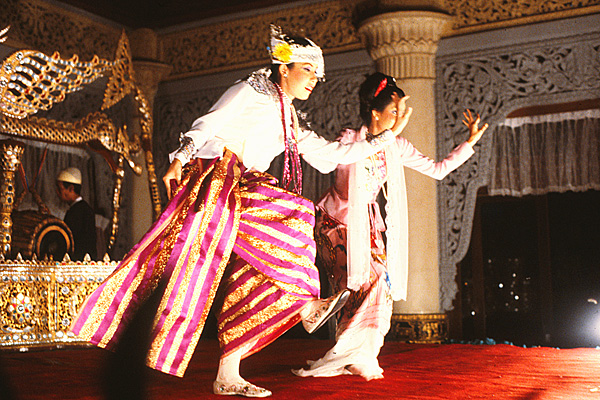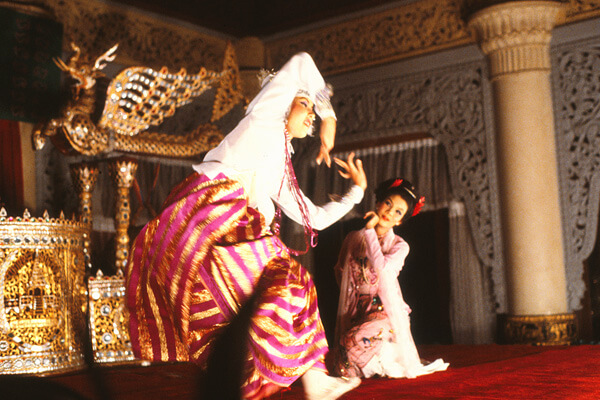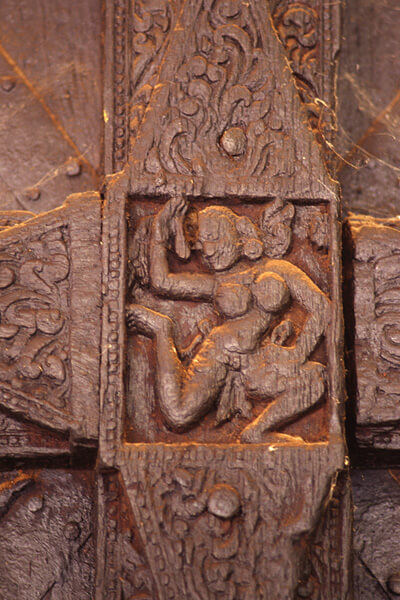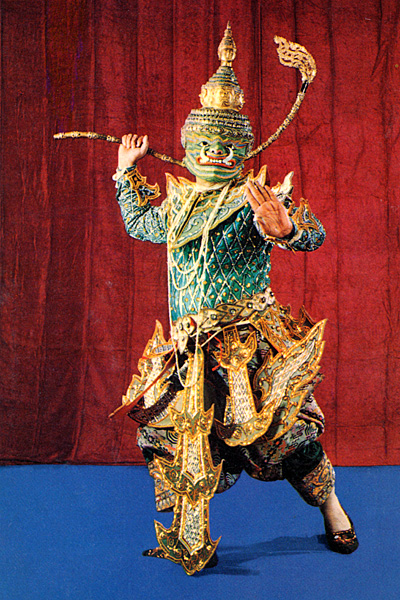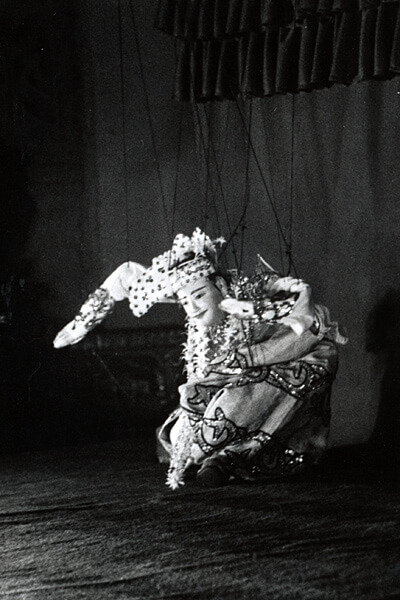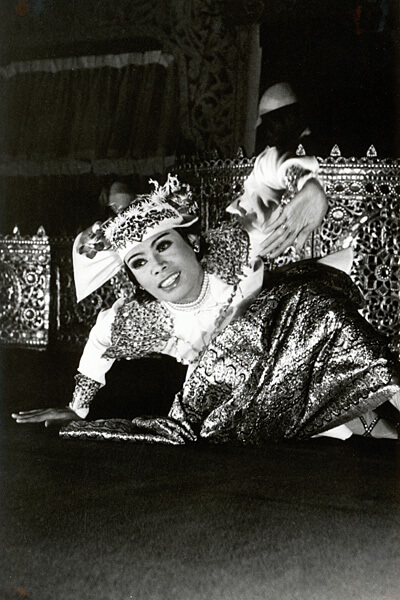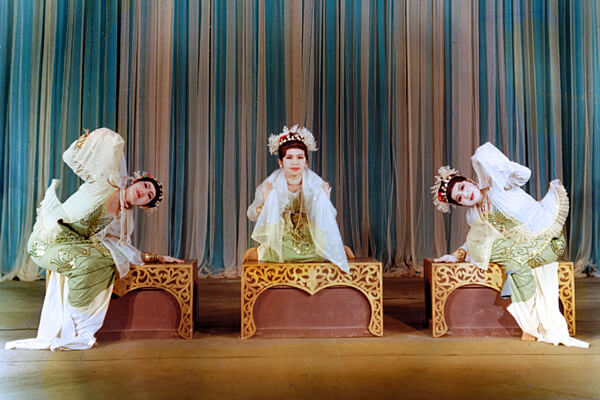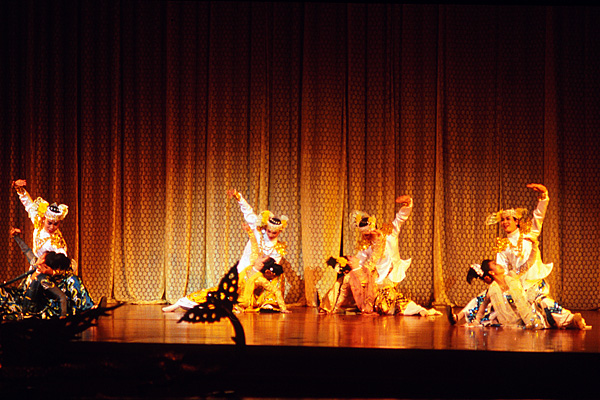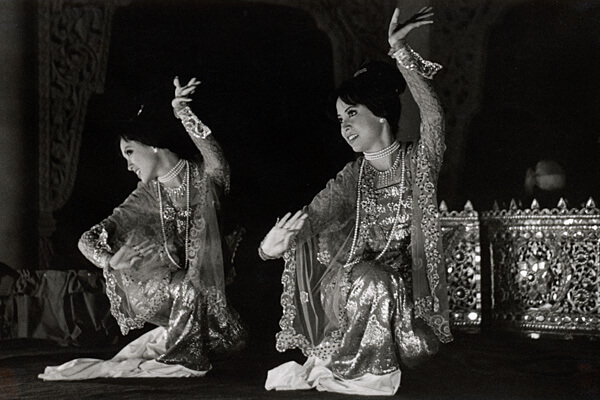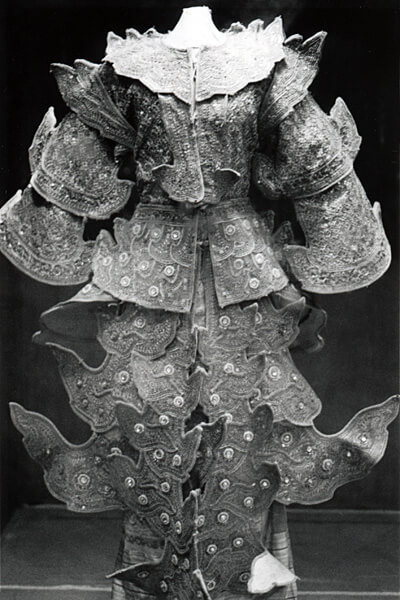Burmese Dance
- Duo dance of the Prince and Princess Jukka O. Miettinen
- Duo dance of the Prince and Princess Jukka O. Miettinen
There is only fragmentary knowledge of the early history of Myanmar classical dance. It seems clear, however, that the present style and technique evolved over some 1 500 years, incorporating elements of the earlier Mon and Puy traditions predating the arrival of the Burmese. As may be expected, Indian influences are clearly present, but it is not exactly known how the Indian influence was received. It is probable that the source in India was the Pala dynasty off Eastern India, which was partly contemporaneous with the classical Pagan period in Myanmar from the 11th to 13th centuries. Pala culture deeply influenced the arts and architecture of Pagan. Thus it is possible that the influence was also felt in the field of in dance.
- Pyu dancers and musicians, c. 6th–7th centuries. Reproduced from a photograph in the Rangoon National Museum by Jukka O. Miettinen
- Dancer from a Pagan-period wooden door Jukka O. Miettinen
As already discussed earlier, important sources for the history of Burmese dance are the small reliefs from the Pyu period and the several murals and reliefs from the Pagan period. They are characterised by Indian-influenced foot positions, strongly bent bodies, and angular arm positions, all of them features still recognisable in the present-day classical dance technique of Myanmar.
Later, Burmese dance was also influenced by the classical dance of Thailand or, to be more specific, Thai-Khmer dance; the Thais conquered Angkor in Cambodia in the 15th century and, it is believed, abducted court dancers and other artists. The Thais probably modified the style to their own tastes, and this, in turn, was partly adopted in Burma, when the Burmese imprisoned the Thai court with its dancers after the sack of the Thai capital, Ayutthaya, in 1767.
- The demon king Ravana from a Thai-influenced Burmese Ramayana play Historical postcard, in the collection of JOM
Thai theatre and dance gave a new impetus to the performing arts of Burma. During the late 18th and early 19th centuries, the so-called golden age of Burmese theatre, new drama forms evolved, including marionette theatre, which had a major effect on the aesthetics and repertoire of the dance in Myanmar. The Thai khon, a form of mask dance-theatre enacting the story of the Ramayana, has its equivalent in Burmese dance-theatre, and some dances are labelled yodayar, referring to Ayutthaya, the former capital of Thailand.
The Puppet Style
- Puppet-style dance in which a live dancer imitates a dancing marionette Jukka O. Miettinen
- Puppet-style dance in which a live dancer imitates a dancing marionette Jukka O. Miettinen
It is generally believed that the Burmese marionette theatre was developed in order to enact the Buddhist Jataka stories with their moral teachings. Live dancer-actors were regarded as too impure to impersonate the principal characters that present the former incarnations of the Buddha. The art of the puppeteers soon achieved virtuoso levels of performance, and during the century-long heyday of this art form the movements of the marionettes came to dictate the technique and aesthetic standards of live dancers.
Video clip: Duo dance of a live dancer and a dancing marionette Veli Rosenberg
Puppet-style dances are still popular. Many dance numbers are based on the repertory of the marionette theatre, such as the dances of the Magician, the Prince (mintha) and the Princess (minthamee). This partly explains the jerky movements of the dancers, who often perform sitting or crouching on the floor. The marionettes also influenced the way in which the dancers fall down, like a marionette whose strings are cut. The performer, however, always falls to the ground in a very graceful position with legs bent back and arms bent angularly. The facial expression is often a frozen, puppet-like smile, which appears to derive from the marionettes. Over the years, various puppet-style dances evolved, emphasising the precise imitation of the marionettes.
- Puppet-style trio dance Embassy of Burma, Moscow
The Present Technique
- Dance of the Prince multiplied for a group of dancers Jukka O. Miettinen
The present technique and style of dance in Myanmar, as long as the history of the art form may be, is, in fact, a result of the canonising of the Burmese dance technique in the 1950s. The first governmental institutes in control of dance education in Burma were the State Schools of Music in Mandalay and Yangon, founded in 1953. In Burma, where the court tradition had had an abrupt end, it was felt that the classical dance technique should be recreated and standardised for the use of the curriculum of the newly founded State School. This task fell to the renowned performer Oba Thaung, who created the basic movement series, comprising 22 basic movement units (gabyar-lut), still used in dance training in modern Myanmar.
- Energetic female duo ending in a crouching position Jukka O. Miettinen
- Energetic female duo ending in a crouching position Jukka O. Miettinen
In the first basic position, the knees are bent into an almost crouching position, and the body is forward with the arms supporting the small of the back. From this “spring-like” tensed position, the dancer rises from time to time, preserving, however, the s-shaped bending of the body. Footwork closely resembles the “flat-foot” steps typical of many Indian dance styles, but in Myanmar the feet only touch the ground lightly, sometimes kicking the long train of the costume backwards.
The hands repeat gestures of Indian origin, which, unlike the Indian mudras, no longer have any precise symbolic meanings. They are merely “dance gestures” forming an integral element of the dance as a whole. Sharp neck movements accentuate the head movements that follow the rhythm of the music, and the eyes are trained, as in India, to follow the movement.
Many dances, or at least parts of them, are performed in a crouching position; sometimes the dancer is nearly lying on the floor. There are similar dances in other parts of Southeast Asia, and they may have been dictated by the requirements of the strict court etiquette where underlings had to kneel before rulers. In fact, many Southeast Asian dances express respect for a ruler, spirits, Hindu deities or the Buddha.
Forms of Dance
The most archaic of the dances of Myanmar are probably the dance sequences belonging to nat pwe rituals, already discussed earlier. As was mentioned, they have also been adapted to the more refined, classical repertory. The actual court tradition of Burma was abruptly ended by the Anglo-Burmese wars and the complete destruction of the country’s court culture. However, some of the courtly dance forms spread among the ordinary people when former court artists were forced to find their livelihood outside the restricted circles of the court.
- Female group dance of the mythical beings of the Himalayas Embassy of Burma, Moscow
The actual court dancers were not allowed to perform for outsiders, but they could teach their art to ordinary dancers. Thus the female tradition of court dance spread to the cities of Mandalay and Rangoon at the end of the 19th century. The relatively small court orchestra was expanded, and the performances gained increasingly theatrical features. By the early 20th century the female group dances became very popular and overshadowed many other forms of dance. These kinds of dances are usually performed by large groups of female dancers who execute the dance in unison. They form often part of communal festivities, temple fairs etc. on a grand scale.
Many dance forms have also flourished naturally among ordinary people, both ethnic Burmese and other ethnic groups. Drum dances have had a long history, as is seen in the temple murals of the Pagan period. However, in the 17th century, it is believed, a long-drum dance became increasingly popular. The dancers played long drums while dancing. Later the drums grew in size even more and they were supported by stands. Simultaneously, the dance became more theatrical in character. Their popularity ceased at the beginning of the 20th century when the female group dances became popular.
- Court costume from the court of Mandalay, at the Rangoon National Museum Jukka O. Miettinen
- Shan-tradition dance of the mythical kinnari performed by a dancer from North Thailand
There are naturally dozens of different dances in the region of present-day Myanmar. As has already been discussed, the puppet style dances, derived from the repertory and character gallery of the marionette theatre, are still very popular. One theme, known in many Southeast Asian cultures, is the dance of the kinnari, a half-bird half-human creature described in Buddhist mythology. It belongs both to the actual Burmese repertory as well as to the Shan tradition of Northeast Myanmar. It is characterised by standard poses indicating flying. The Burmese version is performed in traditional dance costume imitating the court costume of the court of Upper Burma, while in the Shan version the dancer wears a fantastic costume with large, colourful wings supported by bamboo sticks.
